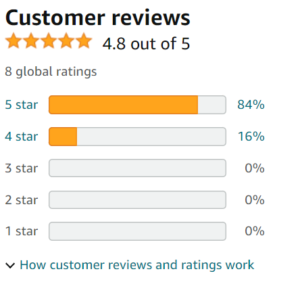I’ve been writing for a little over four years, now. And they have been productive years. I’m about to turn in my fifth book to my publisher. I hope I still have a lot of room to improve, but I’ve spent enough time to develop my own thoughts on the process and the techniques of writing. So, I thought I’d write a series of blogs on what I’ve learned. Not that the world needs yet another writing blog, but the world doesn’t have my take on the subjects and it is my blog, so…
One of the most fundamental concepts for new writers to understand is showing vs. telling. As a general rule, it’s preferable to show rather than tell. Most of the time. You can’t show everything. Otherwise your book will end up being too long and could be tedious. The trick with show vs tell is to know when to show and when to tell. So what is showing and what is telling? As I am a former academic with some background in cognitive psychology, I’ll start there.
Like most social animals, humans have very sophisticated cognitive processes to interpret social cues. Interpreting cues like body language, vocalizations (i.e. voice tone), and facial expressions is critical to interpreting the intentions and emotions of others. These processes are automatic and tied closely to our ability to mirror another person’s emotions (feel empathy). Of course, these processes are not developed to the same degree in everyone. For example, introverts often feel taxed by social situations because of the effort required to interpret social cues. So how does this apply to show vs tell?
In its simplest form, show vs tell means it’s better to show a character’s emotions through actions, dialog, body language, tone, etc. rather than tell the reader what they are feeling. Don’t tell a reader the character is angry, show their heart rate increasing, fists clenching, etc. Showing engages a reader’s natural social cues processes and allows the reader to participate in the story at a deeper, emotional level. Simply telling the reader a character is angry invokes different processes and requires an additional step to connect the word to the emotion. It brings them out of the story a little and that’s always something you should avoid.
An example of showing from my first novel, Spirit Sight.
So, this was what he had been waiting for. Goose bumps rose along his arms and his heartbeat, already thready, sped up. Forcing his voice to remain steady, he asked, “Why so cryptic? Why can’t you just tell me what this is about?”
Aron chuckled. “Funny, that’s a question I find myself asking often.” He gave Harold a sympathetic smile.
They stared at one another until Harold felt a smile pulling at his lips. Aron cleared his throat and looked down at the table, hiding the blush which began climbing his cheeks again.
Harold’s rising excitement and the characters’ mutual attraction are both shown rather than told. When my writing coach, Kathie Giorgio, read this scene, her first question was, “Are they flirting?” You might be tempted to assume the scene didn’t work because of her uncertainty, but actually that was the perfect response. That small bit of uncertainty pulls the reader deeper into the narrative as they try to interpret what the characters are feeling, the same way one would in a real social situation. As a writer, you’re often tempted to make sure the reader gets the point, but it’s often better to trust the reader and err on the side of subtlety.
Another example from my current WIP, Desulti.
“Anyway,” Danu continued. “There were these boys in the town where we lived. They…” She seemed to shrink within herself, shoulders hunching, arms crossing her chest.
“Why didn’t someone call the gendarmes? Or, I don’t know —”
“Their father was very powerful. No one would help me.”
“Your parents?”
“I think…” She looked down at her feet.
Danu’s body language and hesitancy show her humiliation and despair.
Another way to understand showing and telling is to take a look at how it applies in visual media like television or movies. My partner and co-author, Deb Heim, and I were recently watching a young actor in his first film. Every time this actor had a reaction shot, I was pulled right out of the story as I tried to interpret his expression. It was like he had pieces of the right expressions for a given emotion, but he never put the pieces together in a natural way. Identifying the emotion he was going for required different cognitive processes than the ones to process social cues. That’s an example of telling. The essence of great acting is showing the cues viewers naturally understand so they are immersed in the story and experience the character’s emotions.
So showing is often a better than telling, in my opinion. But not everyone agrees. I’ve been told the show vs tell rule was concocted by the CIA in the 1950s. Seriously. I don’t remember the details or why the CIA cared about how people write, but the fact this idea exists suggests not everyone is thrilled with the emphasis on showing over telling. It’s true, showing is harder than telling, and doing it well is even more difficult. But if you want your writing to deliver an emotional punch, you must master it.
A few tips to show effectively. Use a variety of recognizable cues. It’s easy to overuse a few cues (i.e. racing heartbeat, thready breath). There are some pretty good books that provide cues for many emotions. You don’t have break your brain stretching for the most obscure cue you can find. If they’re too obscure, you will pull the reader out of the story just as surely as if you tell. Just be careful of repetition. You don’t have to go overboard. One or a few cues are often enough. And finally, remember, you don’t have to show everything. Tell when pacing and brevity are required and show when want a bigger emotional impact.





